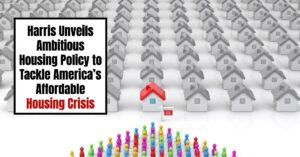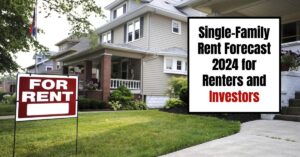The housing market is facing a significant challenge as single-family housing starts dropped by 14.1% in July 2024, reaching a near 1.5-year low. This drop reflects multiple ongoing pressures, such as the impact of Hurricane Beryl, rising mortgage rates, and the oversupply of housing inventory. As buyers hesitate to commit amid financial uncertainty, the construction industry braces for a challenging period.
Single-Family Housing Starts Drop 14.1% in July 2024
Key Takeaways
- 14.1% drop in single-family housing starts in July 2024, the lowest level since March 2023.
- Single-family building permits fell by 0.1% in July.
- The housing market remains constrained by higher mortgage rates and rising house prices.
- 22.9% decline in the South and 27.1% in the Northeast due to weather disruptions.
- Overall housing starts plunged 6.8% to a rate of 1.238 million units, the lowest since May 2020.
Understanding the Decline in Housing Starts
Factors Contributing to the Decrease
The sharp decline in single-family housing starts can be attributed to several intertwined factors:
- Impact of Hurricane Beryl: The recent hurricane disrupted construction activities, particularly in the South, where single-family starts dropped by 22.9%. Texas was significantly affected due to the storm's early-month strike (Reuters).
- Economic Uncertainty and Mortgage Rates: The housing market is constrained by soaring mortgage rates and elevated house prices, which discourage potential buyers. Although mortgage rates have slightly eased, uncertainty remains prevalent as the Federal Reserve considers its policy adjustments.
- Oversupply Concerns: With new housing inventory reaching levels last seen in early 2008, the market may struggle to rebound. An oversupply of homes for sale contrasts sharply with the previous scarcity, leading to a reluctance among builders to invest further in new projects.
Current Statistics and Insights
According to data from the U.S. Commerce Department, single-family housing starts fell to an annual rate of approximately 851,000 units in July 2024, a significant drop from previous months.
- This decline marks the fifth consecutive month of decreasing homebuilding activity, suggesting that the market remains depressed at the onset of the third quarter.
- Single-family housing starts dropped 14.8% on a year-on-year basis.
In regional breakdowns:
- Single-family homebuilding fell 22.9% in the densely populated South.
- The Northeast experienced a 27.1% plummet.
- The West region saw a 1.4% decline, while the Midwest experienced a 16.8% increase in starts.
Market Impacts
Reactions from Builders and Developers
The decline in housing starts has prompted significant reactions in the construction industry:
- Builder Sentiment: According to a recent survey by the National Association of Home Builders (NAHB), builder confidence has dropped to an eight-month low in August, with a notable increase in the perception of challenging housing affordability conditions.
- Resource Allocation: Builders are increasingly hesitant to invest in new builds due to rising costs and are expressing concerns about maintaining finished homes on the market.
Implications for Homebuyers
For potential homebuyers, the current market conditions present a dual-edged situation:
- Price Stabilization Potential: As new inventory slows, there is hope for some stabilization or decrease in existing home prices.
- Competitive Environment for Existing Homes: A tightening inventory in new builds could lead to a competitive environment among buyers seeking existing homes.
Supply Concerns and Future Trends
What Lies Ahead?
The outlook for single-family housing starts remains uncertain. Economists are adjusting their forecasts based on several key variables:
- Interest Rate Forecasts: The average rate for a 30-year fixed mortgage has decreased to 6.45%, down from 7.22% in May. Optimism around potential Federal Reserve interest rate cuts could offer some support to future homebuyers.
- Policy Changes: Changes in housing policy or economic incentives will be crucial in determining the housing landscape moving forward.
Broader Housing Market Statistics
- Overall housing starts dropped 6.8% to 1.238 million units, marking the lowest level since May 2020.
- Permits for future construction of single-family homes slipped 0.1% to 938,000 units, while multi-family permits dropped 12.4% to 408,000 units.
- Housing projects with five units or more saw an 11.7% increase in starts, totaling 363,000 in July.
Summary:
The 14.1% drop in single-family housing starts in July 2024 indicates a pivotal moment for the housing market, compounded by natural disasters, economic pressures, and changes in consumer sentiment. Builders are adapting to a climate of uncertainty, while potential homebuyers may find both challenges and opportunities in the evolving landscape.
ALSO READ:
- New Housing Construction Trends and Forecast 2024
- Will Federal Cap on Rent Hikes Solve or Worsen Housing Affordability?
- Housing Affordability: Nearly 80% of Americans Face This Crisis
- Will Housing Affordability Improve in 2024?
- 2008 Forecaster Warns: Housing Market 2024 Needs This to Survive
- Housing Market Predictions for the Next 2 Years
- Housing Market Predictions for Next 5 Years (2024-2028)
- Housing Market Predictions 2024: Will Real Estate Crash?











